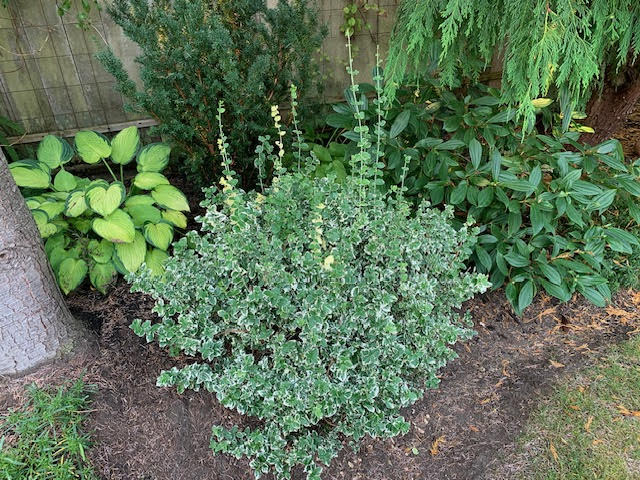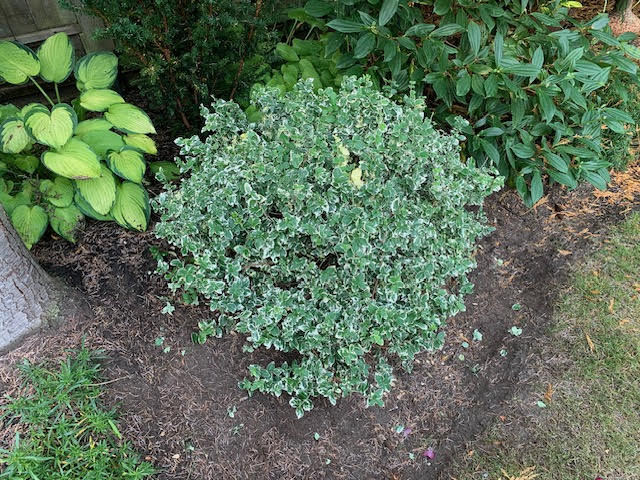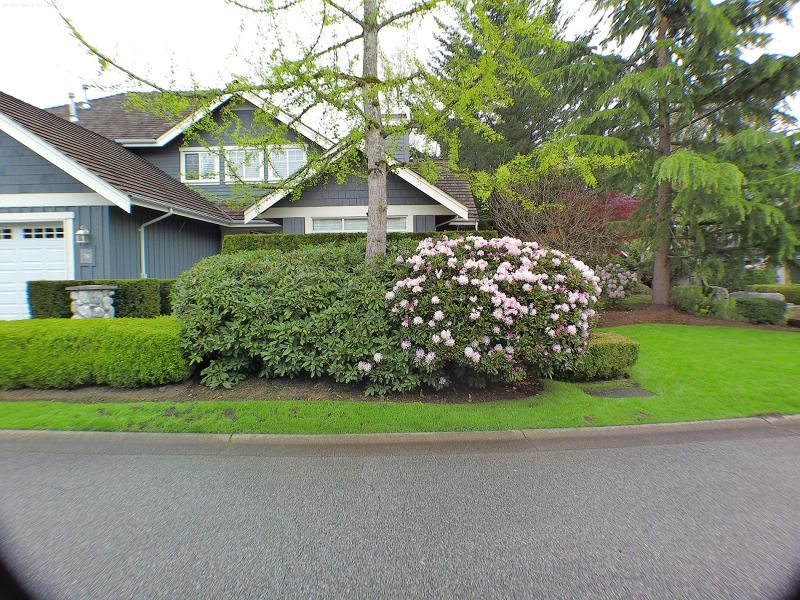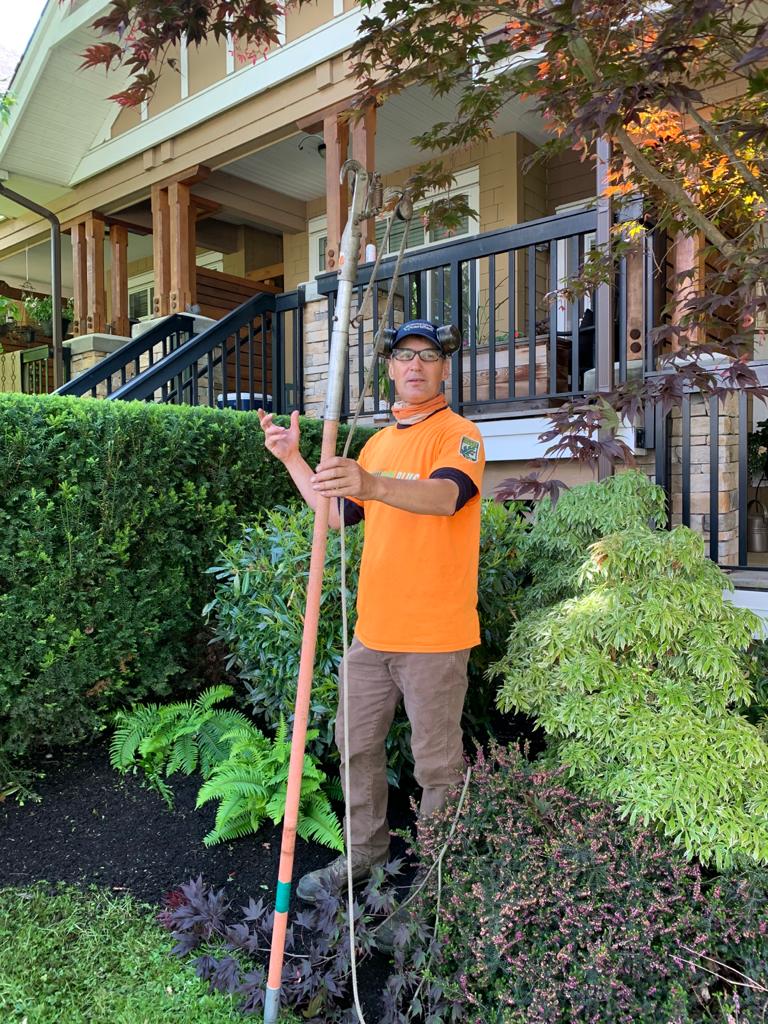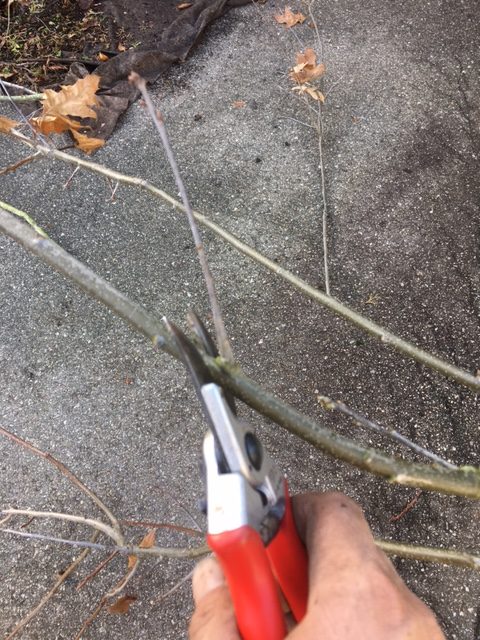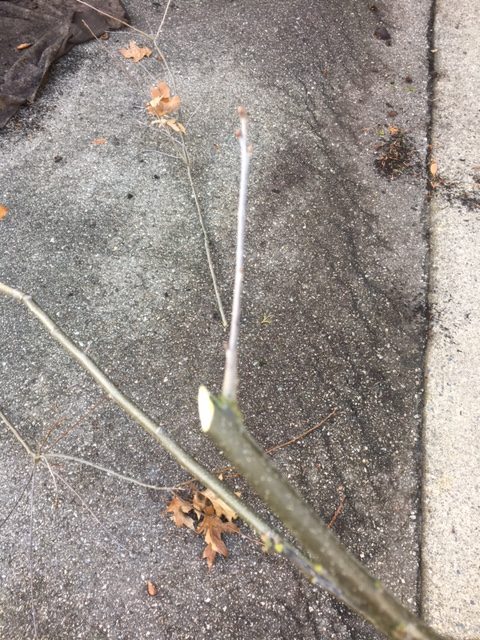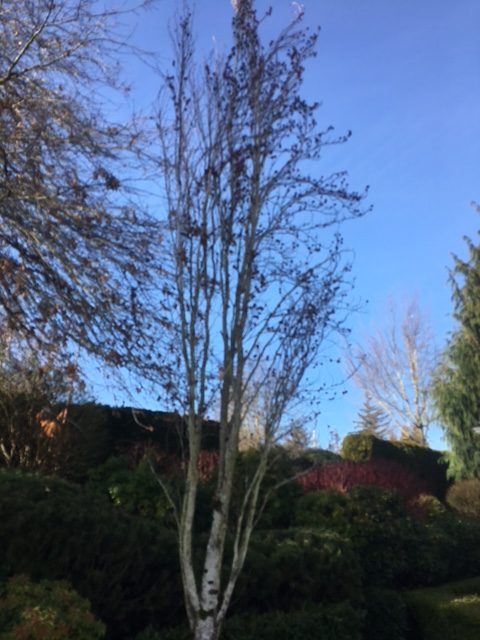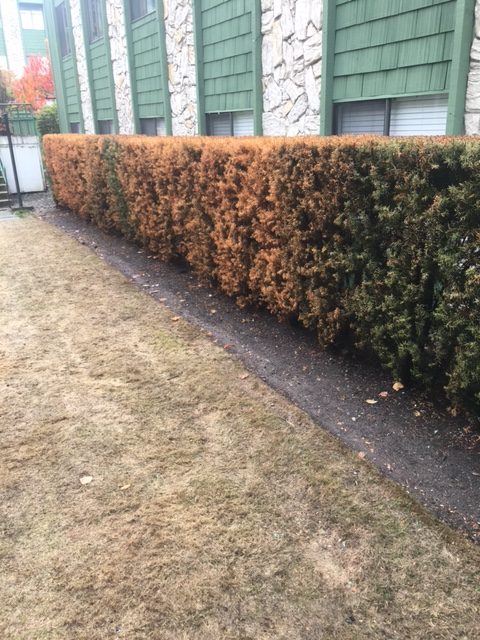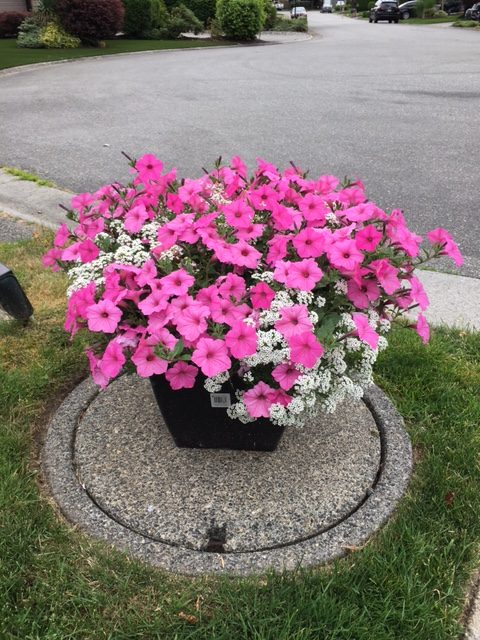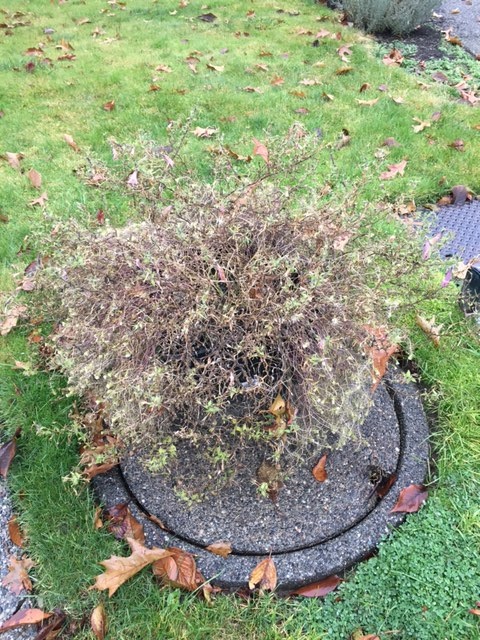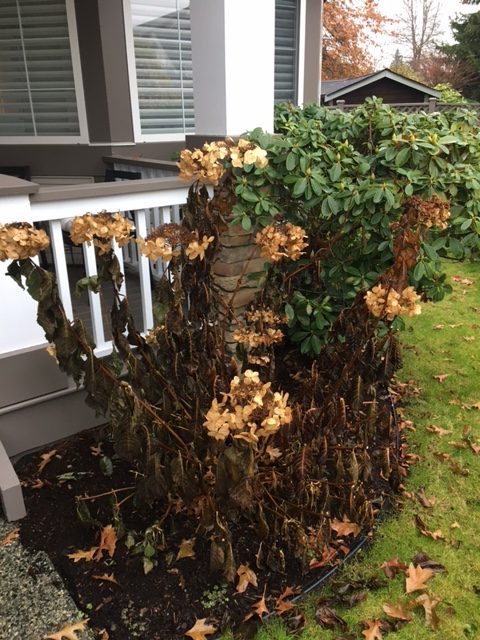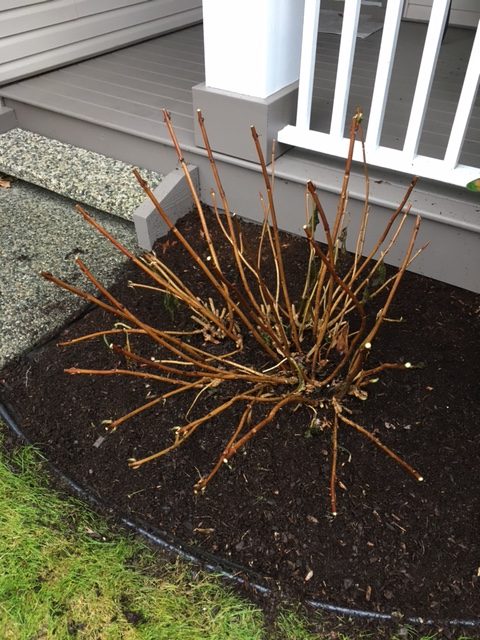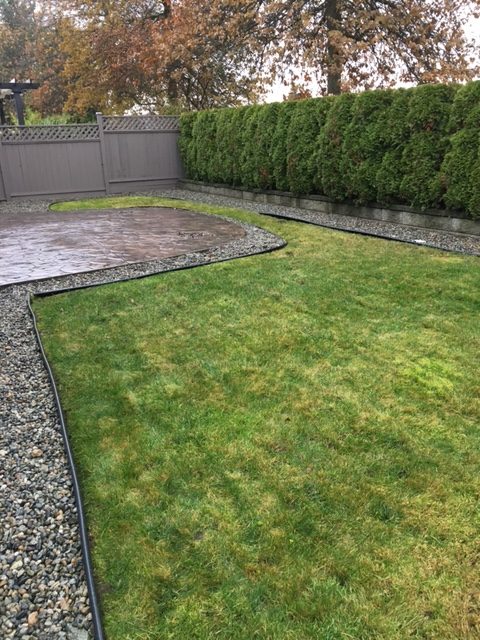Check before pruning
Before you start pruning, stop to assess everything. Ask yourself why you are pruning and then decide how you will do it. In my nightmares, dudes indiscriminately gun down every shrub in sight with power shears.
It also helps when the clients give you a hint, like this past weekend in White Rock. The lady took me for a walk around her back garden and showed me what work she wanted me to get done soon. One obvious target was a shaggy Euonymus.
Gardens vs Strata complexes
Now, I know that most strata landscapers would grab power shears and prune it into a ball, leaving behind tons of debris on the ground and on top of the shrub. It looks fast but it’s a mirage. We’ll get to that soon.
Luckily, I knew the lady’s garden well and nothing in her garden is sheared into formal shapes: balls, squares, rectangles, etc. She has a nice garden and my monthly visits involve a lot of bitch work. I weed, remove leafiness and cultivate the beds. And I also prune so let’s get back to our euonymus shrub. I grabbed my Felco hand snips and, always minding the location of my pretty fingers, carefully grabbed a few stems before snipping them off. And I held on to the debris which was then disposed of in my garden bag. Power shears seem to be faster but not if you include clean-up time. I had almost zero debris on the ground and on top of the shrub.
Good result
Hand snipping gives the shrub a more natural look since the pruning cuts are slightly staggered. And in this garden setting it totally fits. Tight round balls would only make sense if we had some formal shapes in the garden already, either plants or fixed elements. That isn’t the case in this garden and I love it! I openly confess to happily leaving loud, polluting power shears in the truck and enjoying quiet hand snipping on a sunny day in a quiet-and also white and rich-neighbourhood. It feels like therapy.
